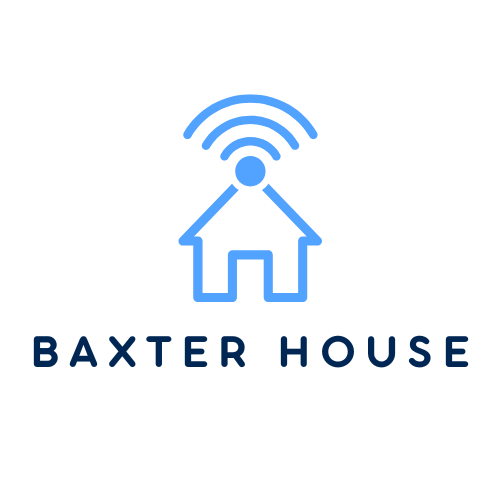In a world where the only constant is change, the real estate market is no exception. As technology evolves and lifestyles shift, new trends are popping up faster than a game of Whac-A-Mole. From smart homes that practically run themselves to eco-friendly buildings that make Mother Nature proud, the landscape of real estate is transforming in exciting ways.
Investors and homebuyers alike need to stay in the loop or risk getting left behind in the dust of yesterday’s trends. Whether it’s the rise of remote work influencing urban migration or the growing demand for sustainable living, these emerging trends are shaping the future of real estate. Buckle up as we explore the hottest developments that could redefine the way we buy, sell, and live in our homes.
Table of Contents
ToggleOverview of Emerging Trends in Real Estate
The real estate market undergoes constant transformation, reflecting technological changes and societal demands. Smart homes, equipped with state-of-the-art technology, gain popularity among buyers. These homes enhance convenience through automation, energy efficiency, and security features. Eco-friendly buildings also emerge as a priority, reducing carbon footprints while attracting environmentally conscious investors.
Urban migration is another significant trend influenced by remote work. More individuals opt for suburban or rural living, driven by the desire for space and affordability. Consequently, demand for homes in these areas rises, reshaping regional real estate markets.
The rise of remote work also impacts commercial real estate. As businesses reevaluate their office space needs, flexible workspaces and co-working environments become sought after. Investors focus on properties that accommodate these new requirements, adapting to evolving business landscapes.
Additionally, mixed-use developments gain traction, blending residential, commercial, and recreational spaces. These projects create vibrant communities, promoting walkability and reducing reliance on vehicles. Residents increasingly prefer neighborhoods that offer diverse amenities within reach.
Real estate technology continues to influence buying and selling processes. Virtual tours and augmented reality streamline property viewing, enabling remote buyers to experience homes firsthand. Blockchain technology revolutionizes transactions, ensuring transparency and security.
Overall, the intersection of technology, lifestyle changes, and sustainable practices shapes the future of real estate. Investors and homebuyers must remain informed about these trends to navigate the evolving market effectively.
Technological Innovations

Technological innovations are rapidly redefining the real estate landscape. These advancements enhance convenience, efficiency, and the overall buying experience.
Smart Home Technologies
Smart home technologies significantly increase property appeal. Smart thermostats adjust heating and cooling automatically, optimizing energy usage. Security cameras provide real-time monitoring, enhancing safety. Smart lighting systems enable remote control and scheduling, improving comfort and convenience. Home automation devices integrate with voice-controlled assistants, offering seamless interaction. These features not only attract tech-savvy buyers but also can lead to higher property values. Many homeowners appreciate the cost savings and comfort that these enhancements bring, making them a key factor in the home buying process.
Virtual Reality Tours
Virtual reality tours transform property viewing experiences. Prospective buyers can explore listings without the need for physical visits, saving time and effort. 360-degree panoramic views provide immersive experiences that showcase properties in detail. Agents can create virtual walkthroughs, allowing potential buyers to visualize space and layout more effectively. This technology eliminates geographical barriers, attracting buyers from diverse locations. The use of virtual reality enhances marketing strategies and increases engagement, solidifying its place as a valuable tool in the buying and selling of real estate.
Sustainability in Real Estate
Sustainability is becoming a pivotal trend in real estate. Eco-conscious consumers favor properties that incorporate green practices and technologies.
Green Building Practices
Green building practices focus on using sustainable materials and reducing environmental impact. Sustainable materials include recycled steel, bamboo, and low-VOC paints. Implementing efficient waste management systems during construction also showcases a commitment to sustainability. Local sourcing of materials reduces transportation emissions and supports the community. In addition, certifications like LEED (Leadership in Energy and Environmental Design) provide guidelines for measuring a building’s environmental performance. Developers increasingly pursue these certifications to attract eco-aware buyers.
Energy-Efficient Homes
Energy-efficient homes are crucial in the market’s shift towards sustainability. These homes often include advanced insulation, energy-efficient windows, and solar panels. The U.S. Department of Energy estimates that well-designed homes can reduce energy use by up to 50%. Potential buyers prioritize properties with smart home technologies, such as programmable thermostats and energy management systems. Incentives, such as tax rebates and credits for energy-efficient upgrades, encourage homeowners to invest in sustainable features. Overall, energy-efficient homes appeal to buyers looking to lower utility costs while promoting environmental responsibility.
Shifts in Buyer Preferences
Shifting buyer preferences reflect the evolving landscape of real estate, influenced by new work arrangements and lifestyle changes. Buyers prioritize features and locations that accommodate modern needs.
Remote Work Impact
Remote work changes how buyers view home features. Many seek dedicated office spaces, high-speed internet, and flexible layouts that support both work and relaxation. Statistics show that 30% of workers prefer hybrid models, prompting families to prioritize homes equipped for these arrangements. A strong preference for properties near recreational amenities emerges as well, providing balance between work and leisure. This trend shapes demand in residential markets as individuals embrace home offices instead of traditional workplaces.
Urban vs. Suburban Living
Urban and suburban living preferences see a significant shift. More buyers are choosing suburbs for spacious homes and affordability. Data indicate that suburban areas experienced a 15% increase in housing inquiries, demonstrating buyers’ desires for larger living spaces. Proximity to nature and community amenities tops the wish list, attracting families seeking vibrant neighborhoods. Urban centers still draw buyers, but the allure of additional square footage drives many to consider suburban options. Balancing convenience with space defines this evolving housing market.
Investment Opportunities
Investment opportunities in real estate are evolving rapidly, influenced by emerging trends and changing consumer preferences.
Residential Market Trends
Residential markets thrive on preferences for space and lifestyle integration. Buyers increasingly focus on homes with dedicated office areas, spurred by remote work’s permanence. Flexibility in layouts allows families to adapt to both work and leisure needs. Proximity to recreational amenities and green spaces ranks high on buyer lists. A 15% increase in inquiries for suburban properties highlights this shift. Eco-friendly homes, featuring energy-efficient designs, also attract environmentally conscious buyers seeking sustainability. Statistics reveal that 30% of workers favor hybrid arrangements, driving demand for versatile living spaces.
Commercial Real Estate Developments
Commercial real estate is not untouched by these trends. Urban centers still hold appeal, yet there’s a surge in demand for flexible workspaces and co-working environments. Companies seek adaptive spaces that accommodate fluctuating staff numbers and foster collaboration. Technology integration improves efficiency, offering solutions like virtual meeting rooms and smart office systems. Many developers are now focusing on mixed-use projects combining living areas with commercial spaces. Such projects create vibrant communities and enhance walkability. Data supports this trend, revealing that properties offering diverse functions attract higher tenant interest.
The real estate market is undergoing a significant transformation driven by technology and changing lifestyles. Emerging trends like smart homes and sustainable building practices are reshaping buyer preferences and investment opportunities. As remote work continues to influence living arrangements many are gravitating towards suburban areas seeking space and affordability. The demand for mixed-use developments and flexible workspaces highlights a shift towards community-centric living.
Staying updated on these trends is essential for investors and homebuyers alike. Understanding the evolving landscape will empower them to make informed decisions in a market that increasingly values innovation and sustainability. Embracing these changes will not only enhance property appeal but also contribute to a more vibrant and functional real estate environment.






